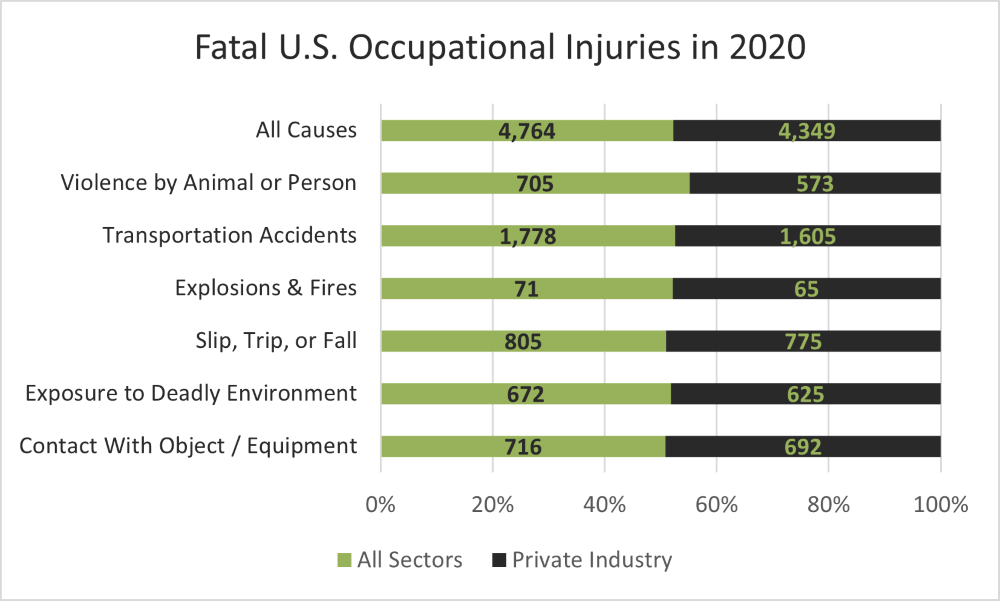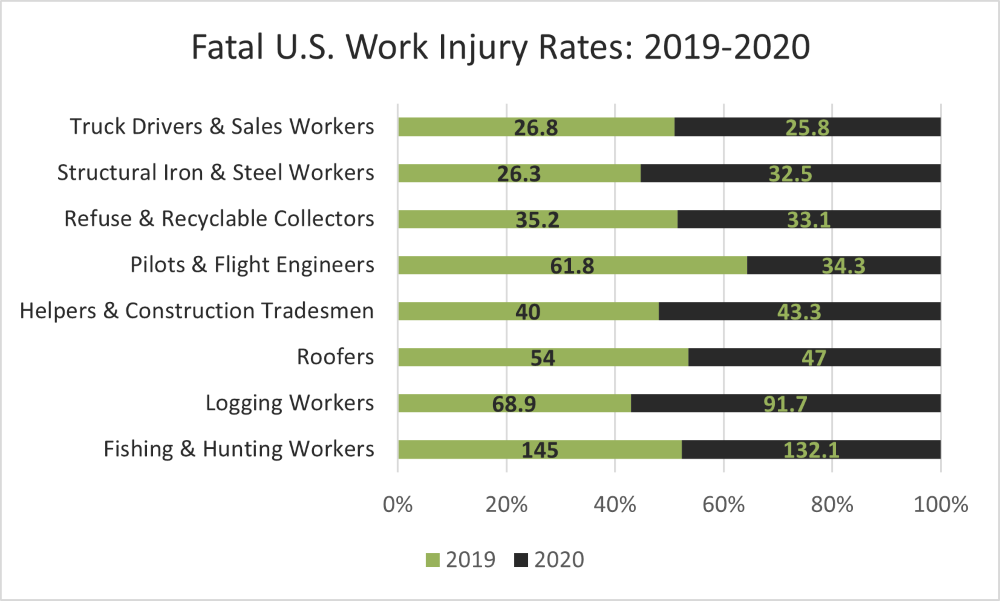Injuries in the workplace are not uncommon, and they can have a lasting impact on the life of a worker and their loved ones. In some situations, workplace injuries occur unexpectedly despite effective safety measures being put in place to protect the workforce. However, many incidents are potentially preventable with efficient safety guidelines, streamlined emergency protocols, and proactive managerial oversight.
In this article, we take a closer look at fatal occupational injury statistics from 2020, the most recent year for which we have been able to find published, peer-approved data. By examining the causes of fatal workplace injuries, we hope to help workers enjoy safer work environments with reduced exposure to unnecessary risks.
What Are Occupational Injuries & Diseases?
Some workplace injuries are instantaneous, while others have a detrimental effect on a worker over a prolonged period of time. A carpenter who cuts their hand with a defective saw and a construction worker who is diagnosed with cancer after years of unprotected exposure to asbestos are both harmed due to their work environment – the main differences between the two situations are the immediate impact of the injury and the timeframe over which the worker was harmed. To distinguish between the different types of harm that can befall a worker, the following terms are used:
- Occupational injuries encompass all forms of physical, bodily harm that occur because of working. A worker may be hurt by an equipment failure, radiation, harmful chemicals or aerosols, blood-borne pathogens, predictable animal attacks, or even unsafe working temperatures.
- An occupational illness occurs due to the sick person’s environment or specific workplace conditions. The illness can be caused or worsened by unsafe air conditions, a lack of sanitation, exposure to deadly chemicals, or otherwise-preventable hazards.
- An occupational disease is a long-term affliction that occurs due to workplace conditions or a worker’s regular activities. Cancer caused by long-term asbestos inhalation at worksites is an example of an occupational disease. These afflictions are generally detected because they occur at a higher rate amongst a specific workforce than the general population.
Leading Causes of Fatal Occupational Injuries in the United States
Having defined the different types of injuries, diseases, and illnesses that can occur in an unsafe environment, we broke down the causes of fatal workplace injuries in 2020. Throughout the year, the United States experienced 4,764 workplace fatalities, according to a study published by Jacobs & Jacobs. 92% of all workplace fatalities in 2020 occurred in the private sector. The leading cause of lethal workplace incidents was transportation accidents, which accounted for 37% of all deaths.
Which Industries Suffered the Highest Rate of Fatal Workplace Accidents?
Although there is a risk of injury in almost any occupation, the chances of suffering serious injury is substantially higher in specific lines of work. Using data acquired from the U.S. Bureau of Labor Statistics from 2019-2020, we graphed the rate of fatal occupational injuries per 100,000 full-time employees by occupation over the two-year period. Doing so allows us to see how often workers suffer lethal injuries depending on their line of work, without the data being overly impacted by how many workers there are in a particular industry.
What to Do if You’re Harmed at Work
Even a seemingly minor workplace injury can be incredibly traumatic. If you or a loved one are harmed on the job:
- Report the incident or injury to a supervisor or management.
- Document the injury. Take photos of injuries sustained, the scene of the accident, and wounds suffered by anyone else who was involved. If there were witnesses, note their contact information.
- Seek medical care. Don’t wait for your workplace-related illness or injury to worsen.
- Follow the guidance of a trusted medical practitioner. If you ignore or fail to follow elements of your treatment plan, you may risk being fired for cause or jeopardize the chances of a successful injury lawsuit.
- Complete your workplace’s incident paperwork or other required forms.
- Contact a workers’ compensation lawyer. If a loved one lost their life due to a workplace incident, a local wrongful death attorney can help you determine your legal options.






No Comment